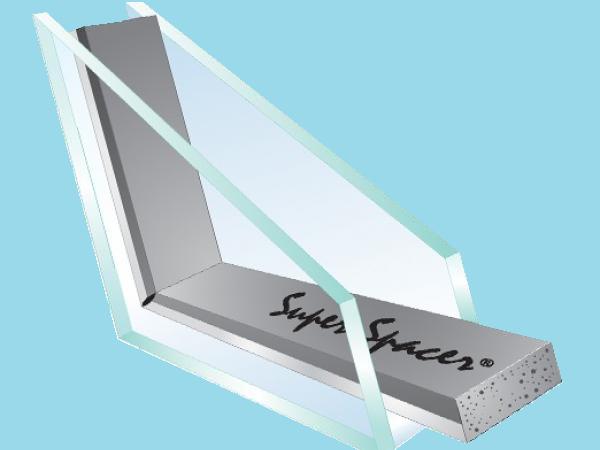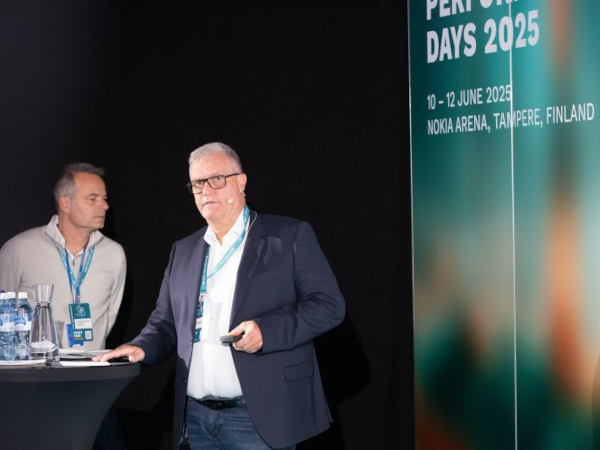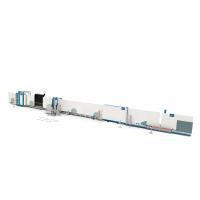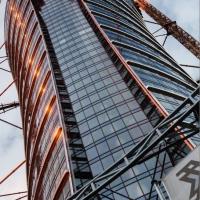One concern regarding the sustainability of a building is the durability of its most significant components – the façade or the windows. Another aspect to consider is the solar heat gain – the positive effect of natural daylight in rooms everywhere across the globe and of sunlight supporting the central heating in the non-equatorial zones in the world.
It all comes down to proper control. Saving on artificial lighting energy by harnessing the benefits of natural light distribution and wavelengths combined with state-of-the-art insulating properties of today’s insulating glass - sometimes even achieving energy saving performance with two-pane warm-edge insulating glass where conventional technologies only achieve similar energy saving with triple insulating glass - helps dramatically reduce the overall costs of energy consumption in buildings.
U-value and psi-value simulations are key indicators that illustrate the energy saving differences between the windows of today, and their predecessors. But in addition to energy saving considerations, design also plays a key role in the construction process. New technology building components should support design ideas, not limit them.
Today’s headlines are full of news about energy saving initiatives and accomplishments, and serve as a constant reminder of the relentless demand for superior energy saving standards and the need to replace prime energy consumption with renewable energies. Recent dramatic incidents relating to nuclear power plants have reignited the debate about the safety of nuclear power and have given energy saving initiatives and renewable energy generation a further boost.
Windows and facades are still seen as a weak link in the building envelope if you only take into account comparisons of the U-values of different construction materials. What hasn’t been recognized, or at least not well enough in the political arena, is the fact that the development of the energy saving performance of (insulating) glass in the past few decades has dramatically improved, and this improvement continue.
It is these developments in glass, which not only give it an untinted, bright white, clear view, but also the coatings of the glass, which provide a multitude of functions and fit for purpose applications that make it a very interesting component to use in building construction. Glass can serve as a sun-blocker, prevent heat-loss and even actively serve as a heating element, absorb noise, have a switchable transparency, offer fire and burglar protection – and even offer propelled armour- proof features!
Some or all of these properties are features that an architect or a civil engineer may or may not know, but (worryingly) politicians, who are taking decisions and creating policy on the future building regulations, often do not know. We could talk for days about these subjects, but for the purpose of this paper, we will focus on:
1. Energy Saving With Glass – High Performance Warm-Edge Insulating Glass
The energy performance of glass and insulating glass has over time improved significantly, probably even more so than any other area of construction. From a u-value of 5.6 W/m²K in single glass, to first generation insulating glass with a u-value of 2.8 W/m²K down to 2 W/m²K for the 2nd generation IGs to today’s double pane high performance insulating glass of close to 1.0 W/m²K or sometimes 0.6 or 0.5 W/m²K for triple glass, coated and gas filled.

Fig. 1 UG-value from single pane to high performance insulating glass
Because the glass of today is more prone to damages, like scratches on the coatings, etc. the production process needs to be adapted to a more sensitive handling of the glass. Therefore, in turn, it provides the best in technology in terms of transparency, thermal performance and durability.
2. Producing High Performance Insulating Glass With Low Failure Rate – Automation is the Key to Durability and Sustainability
The sensitivity concerning the handling of the coatings, plus the fact that every hand touching the glass contributes significantly to the failure rate of the finished product, means heavier reliance on automated glass handling, from unloading the sheet size panes from the jumbo-racks, over cutting and sorting the many different glass sorts and thicknesses to the relevant order racks, not stopping when loading the glass panes in the correct sequences onto the IG line, grinding the perimeters and deleting the edges, to applying a desiccant-integrated spacer, gas-filling and matching as well as sealing the IG with a durable seal - all automatically without touching the glass with a single hand.
For the increasingly popular triple glazing, one can imagine that the automated application of a flexible, yet strongly bonding spacer is way more precise than the rigid, bent or keyed profile spacers, especially on bigger size units. However, on all insulating glass, this automatic application of spacers ensures a high and consistent quality, a constant high efficiency and output of IG- production, and creates high performance durable insulating glass units.
Using today’s technology for glass handling and insulating glass production equipment in combination with flexible, foam-based, desiccant-integrating spacer automatically applied from reels onto the glass sheets with previously unheard of precision and structural strength, helps the IG manufacturer delete five production steps and improves his productivity significantly.
This results in a much better product at comparable costs. And because all production is computer-controlled and machine-processed, the warranty- and failure rate is at an unbeatable low. Also, because the elastic, foam based spacer makes the complete edge seal an elastic, but strongly bonding seal to the glasses.
This in turn minimises all thermal and weather impact to the insulating glass, creating proven and unbeaten durability and therefore sustainability of the used components. This very sensitive use of components and raw materials with a high precision and efficiency is the key to sustainability, meaning worthwhile use of resources for long-life products.

Fig. 2 Differences in IG production steps between conventional and desiccant-integrated spacers
A further benefit of desiccant-integrating foam spacers beyond the above mentioned is their flexible nature, while also bonding strongly to the glass with an additional acrylic adhesive. This makes the polyisobutylene solely a moisture- and gas-barrier, sitting in between the acrylic adhesive and the outer sealant, like IG silicone, Polyurethane or Polysulfide. Barometric pressure- and thermal changes cause the insulating glass unit to bow outwards and inwards, which with the rigid spacer acting as a pivot, causes additional stresses to the edge seal.
It’s no surprise that this can result in the lower life expectancy of an insulating glass unit. Because of its flexibility, a foam-based flexible spacer decreases the stress on the outer sealants as it flexes with the pressure variances between the inside and outside of the insulating glass, and guarantees long durability proven in world-wide testing to the highest standards. This flexible, but strongly bonding behaviour of the complete edge seal can also outperform the highest requirements for wind-load and hurricane test standards.
3. High Performance Windows Gain More Than They Lose
Even though it still has a somewhat worse U-value compared to other building elements, glass has a significant advantage: it is transparent and therefore lets natural daylight into the inside of buildings, as well as providing the opportunity to transfer and store the heat radiated by the sun – an especially welcome feature in the northern hemisphere in winter times, but also in the equatorial areas around the globe you see glass facades all over the buildings.
These facades can have shading features, and as triple insulating glass can have a multitude of purposes even in these parts of the world. It can also block the heat, but still let the much desired natural sunlight into the rooms as much as possible. Proper and intelligent heat re-collection systems can cool complete building structures through water pipe systems, as you know. Intelligent handling of the solar gain features can, especially in the northern hemisphere, create more positive effects than it has negatives.
Furthermore with power created out of PV elements or other renewable energies, it can run any necessary air conditioning systems and create a fully integrated active building condition management system.
4. A Warm-Edge Insulating Glass Spacer as Bendable as the Glass but Strong in Structure
Energy-saving is top of the agenda in today’s world. Nonetheless design is also one major deciding factor when buildings are being planned and built. If efficient and precise production of high performance warm-edge insulating glass comes together with aesthetics and not limiting the constructive possibilities of architectural glass art, then new horizons are to be explored in architecture.
No matter what size a glass panel is, no matter if it is bent or flat, whatever is possible with glass is also possible to produce as high performance warm-edge insulating glass with the latest generation of flexible warm-edge spacers. For additional structural safety requirements there are also dedicated foam spacers for bent glass architectural applications available.
Imagine: Saving the third pane in a project by using real warm-edge spacers instead of using conventional metal or plastic spacers saves more than 1/3rd of a project’s façade costs and still achieves highest thermal performance requirements – a point well worth considering when planning a high rise building project. Despite the fact that the spacer technology is radically different from conventional insulating glass, there is still the confidence of over 20 years experience with the products – that’s a pretty convincing argument to explore different paths in modern building design. Let us go and expand the borders of architectural design.
Christoph Rubel
Edgetech Europe GmbH


















